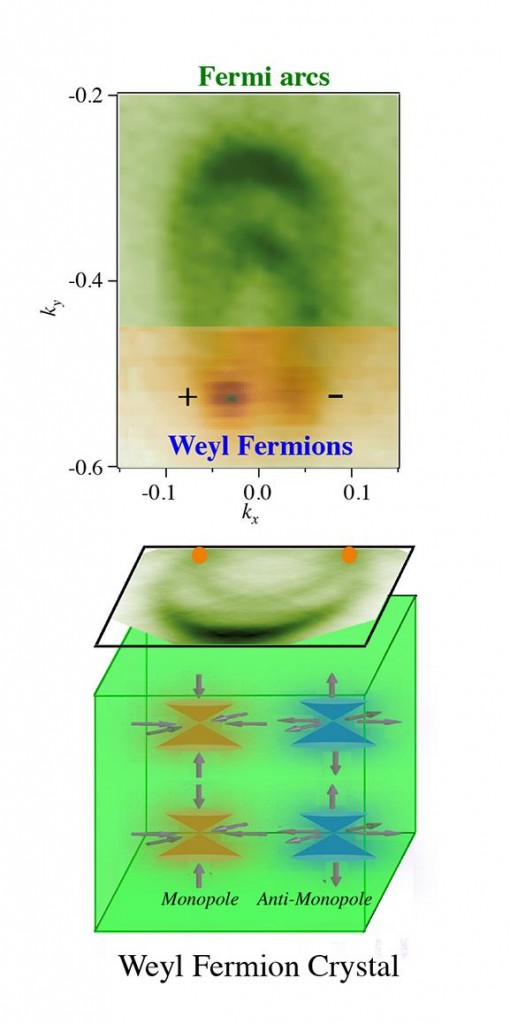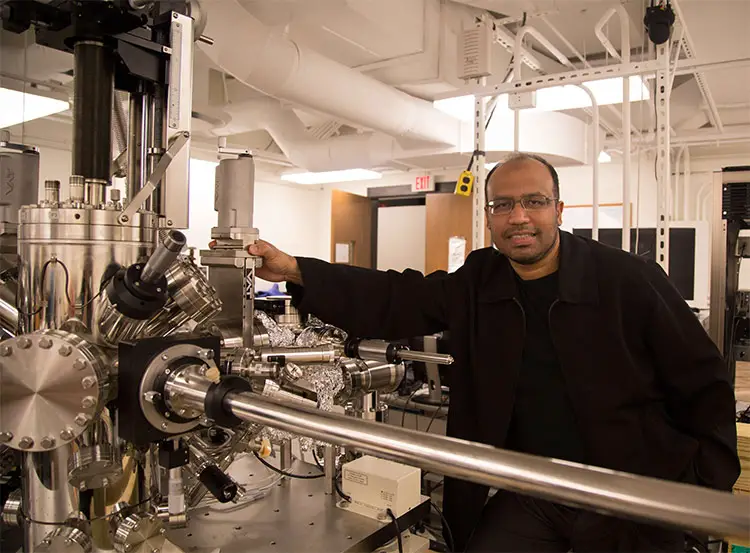
20th July 2015 New massless particle is observed for the first time Scientists report the discovery of the Weyl fermion after an 85-year search. This massless quasiparticle could lead to future electronics that are faster and with less waste heat.
An international team led by Princeton University scientists has discovered an elusive massless particle, first theorised 85 years ago. This particle is known as the Weyl fermion, and could give rise to faster and more efficient electronics, because of its unusual ability to behave as both matter and antimatter inside a crystal. Weyl fermions, if applied to next-generation electronics, could allow a nearly free and efficient flow of electricity in electronics – and thus greater power – especially for computers. The researchers report their discovery in the journal Science. Proposed by the mathematician and physicist Hermann Weyl in 1929, Weyl fermions have been long sought by scientists, because they are regarded as possible building blocks of other subatomic particles, and are even more basic than electrons. Their basic nature means that Weyl fermions could provide a much more stable and efficient transport of particles than electrons, the main particle behind modern electronics. Unlike electrons, Weyl fermions are massless and possess a high degree of mobility. "The physics of the Weyl fermion are so strange – there could be many things that arise from this particle that we're just not capable of imagining now," explained Professor M. Zahid Hasan, who led the team. The researchers' find differs from other particle discoveries, in that the Weyl fermion can be reproduced and potentially applied. Particles such as the Higgs boson are typically detected in the fleeting aftermath of collisions. The Weyl fermion, however, was captured inside a specially designed synthetic metallic crystal called tantalum arsenide.
The Weyl fermion has two characteristics that could improve future electronics, possibly helping to continue the exponential growth in computer power, while also proving useful in developing efficient quantum computing. Firstly, they behave like a composite of monopole- and antimonopole-like particles inside a crystal. This means that Weyl particles that have opposite, magnetic-like charges, can nonetheless move independently of each other with a high degree of mobility. Secondly, Weyl fermions can be used to create massless electrons that move very quickly with no backscattering. In electronics, backscattering hinders efficiency and generates heat. While normal electrons are lost when they collide with an obstruction, Weyl electrons simply move through and around roadblocks. "It's like they have their own GPS and steer themselves without scattering," said Hasan. "They will move and move only in one direction since they are either right-handed or left-handed and never come to an end because they just tunnel through. These are very fast electrons that behave like unidirectional light beams and can be used for new types of quantum computing." Hasan and his group researched and simulated dozens of crystal structures before finding the one suitable for holding Weyl fermions. Once fashioned, the crystals were loaded into a scanning tunnelling spectromicroscope (pictured above) and cooled to near absolute zero. Crystals passing the spectromicroscope test were taken to the Lawrence Berkeley National Laboratory in California, for testing with high-energy photon beams. Once fired through the crystal, the beams' shape, size and direction indicated the presence of the long-elusive Weyl fermion. The hunt for the Weyl fermion began in the earliest days of quantum theory, when physicists first realised that their equations implied the existence of antimatter counterparts to electrons and other commonly known particles. "People figured that although Weyl's theory was not applicable to relativity or neutrinos, it is the most basic form of fermion and had all other kinds of weird and beautiful properties that could be useful," said Hasan. "After more than 80 years, we found that this fermion was already there, waiting. It is the most basic building block of all electrons," he said. "It is exciting that we could finally make it come out following Weyl's 1929 theoretical recipe."
Comments »
|








